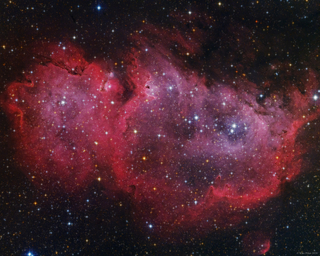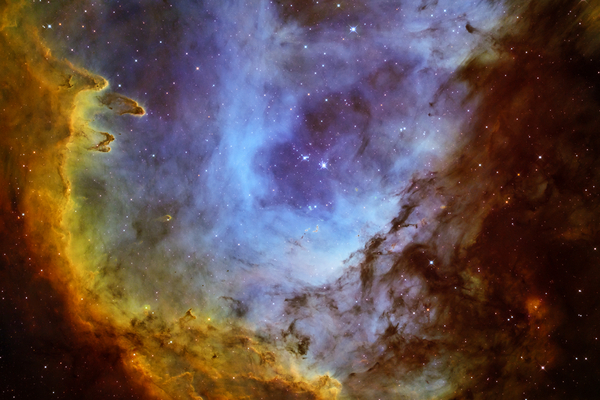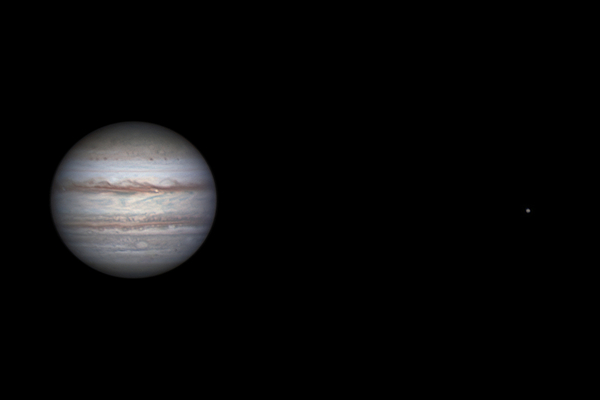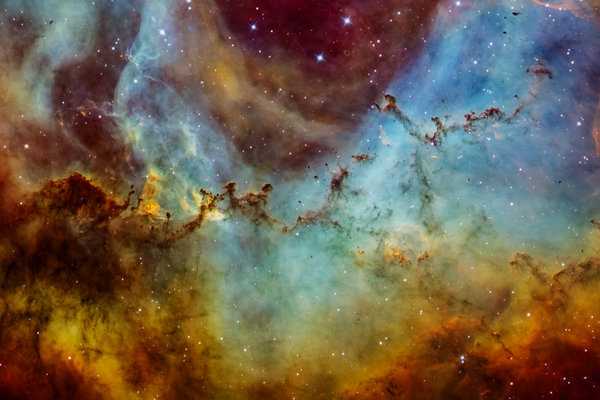Picture of the Month - January 2020 - IC1848
Péter Kiss's uniquely detailed image of the Soul Nebula
A wonderful and special astrophotography image each month by Hungarian astrophotographers.
Nebula in the constellation Cassiopeia
The deep-sky object known as the Soul or Embryo Nebula is an emission nebula in the constellation Cassiopeia. It is also referred to as IC 1848, which is actually an open cluster inside the nebula. The nebula itself is a vast molecular cloud in the interstellar space. A part of the gases in the cloud emit their own light due to ionizing radiation from the bright members of the cluster, thus the mainly reddish-colored nebula becomes visible. The extension of the Soul Nebula is approximately 100 light years, spans an area of sky equivalent to two full moons, its age is estimated to one million years. The nebula’s distance to Earth is 7500 light years. The characteristic column-like formations in the nebula were formed by the stellar wind emitted by the stars over thousands of years.
A special LRGB-technique
This photo was made using a special so-called LRGB technique. The RGB (Red-Green-Blue) refers to the traditional image capturing without filters, while the L (Luminance) refers to an image captured with a UHC filter. The advantage of this technique is that the dense star field becomes more manageable by using the L-layer. It is of importance for the nebulas close to the band of light of the Milky Way. During post-processing the nebula can be better highlighted from the star field making the end result much more spectacular. The disadvantage of this technique is that it increases the exposure time enormously by having to take images with and without filter from the same object.
Six nights’ work and a panorama image
An additional difficulty with this object was that due to its large apparent size it couldn’t fit into the camera’s field of view. Therefore this image is actually a two-panel mosaic shot (like taking a panoramic photo with our phone). It took six nights to take this picture: 2x2 nights for the above mentioned L-layer and 2x1 nights for the RGB-layer.
Péter Kiss





